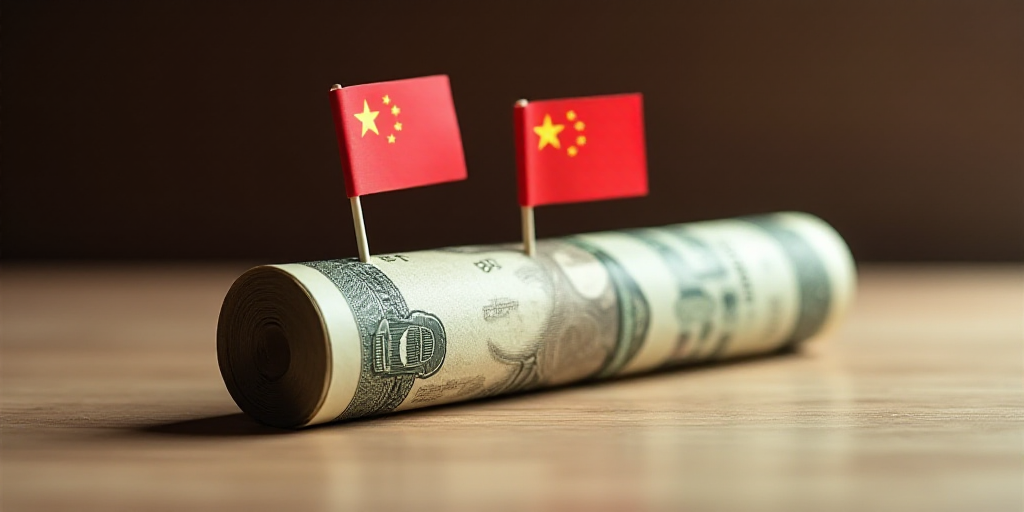Background on the Key Players
The recent trade agreement between China and the United States has significant implications for global commerce. To understand its importance, it’s essential to know the key players involved.
- China: As the world’s second-largest economy, China plays a pivotal role in global trade. It controls the majority of the world’s rare earth metal extraction, which are crucial for manufacturing various technologies, including electric vehicle batteries, wind turbines, and defense systems.
- United States: Under President Donald Trump, the US has been prioritizing trade negotiations to secure access to these vital resources and reduce tariffs on goods exchanged between the two nations.
The Trade Agreement Details
On Friday, China confirmed the details of a trade agreement reached with the United States. According to the Chinese Ministry of Commerce, Washington will remove certain “restrictive measures,” while China will review and approve export-controlled items in accordance with the agreement.
- US Commitment: The United States has agreed to cancel a series of restrictive measures against China, as stated by the Chinese Ministry of Commerce.
- China’s Commitment: China will review and approve export control requests that meet the agreement’s legal requirements.
Rare Earth Metals and Their Importance
One of the primary objectives for the United States in negotiations with China was ensuring a steady supply of rare earth metals. These elements are essential for manufacturing various technologies, including:
- Electric vehicle batteries
- Wind turbines
- Defense systems
China, which dominates the global rare earth metal market, began requiring export licenses for these metals in early April. This move was largely seen as a response to tariffs imposed by then-President Donald Trump.
Trade Negotiations and Progress
In May, following talks in Ginebra, the US and China agreed to temporarily reduce high tariffs applied to each other’s products. China also committed to softening some non-tariff countermeasures, but US officials later accused China of slowing down the approval process for rare earth metal export licenses.
Both parties eventually agreed on a framework to advance their Ginebra consensus following discussions held this month in London.
“It is expected that the US and China will find a middle ground,” stated a Chinese Ministry of Commerce spokesperson in a press release. Both parties “confirmed the details of the framework,” they added.
Potential Extension of Tariff Deadline
On Thursday, the White House hinted that Washington might postpone the July deadline for implementing higher tariffs on imports from numerous countries.
- Trump’s Tariffs: This year, President Trump imposed a 10% tariff on most of the US’s trading partners. He also announced higher tariffs for dozens of economies while negotiating agreements, although he eventually abandoned this decision. The deadline is July 9.
- White House Spokesperson Karoline Leavitt: “The President may simply offer a mutually agreed-upon reciprocal tariff rate that he deems advantageous for the US,” she explained.
EU’s Confidence in Rare Earth Metal Flow from China
US Treasury Secretary Scott Besson expressed confidence that rare earth metals would continue to flow from China following the trade agreement, according to a Fox Business Network interview.
“I trust that now that we have an agreement, the magnets will keep flowing,” Besson said. He also mentioned that the US had implemented countermeasures after China slowed the delivery of critical minerals.
“What we’re seeing here is a de-escalation under President Donald Trump’s leadership,”
Key Questions and Answers
- Q: Who are the key players in this trade agreement?
A: The key players are China, as the world’s second-largest economy and a dominant force in rare earth metal production, and the United States under President Donald Trump. - Q: What are rare earth metals, and why are they important?
A: Rare earth metals are essential for manufacturing various technologies, including electric vehicle batteries, wind turbines, and defense systems. - Q: What were the primary objectives of the US in negotiating with China?
A: The United States aimed to secure a steady supply of rare earth metals and reduce tariffs on goods exchanged between the two nations. - Q: What commitments did each country make in the trade agreement?
A: The United States agreed to remove restrictive measures, while China committed to reviewing and approving export-controlled items in accordance with the agreement. - Q: Is there a possibility of postponing the higher tariff implementation deadline?
A: Yes, there is a possibility that Washington might extend the July deadline for implementing higher tariffs on imports from various countries.






